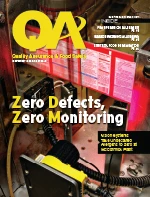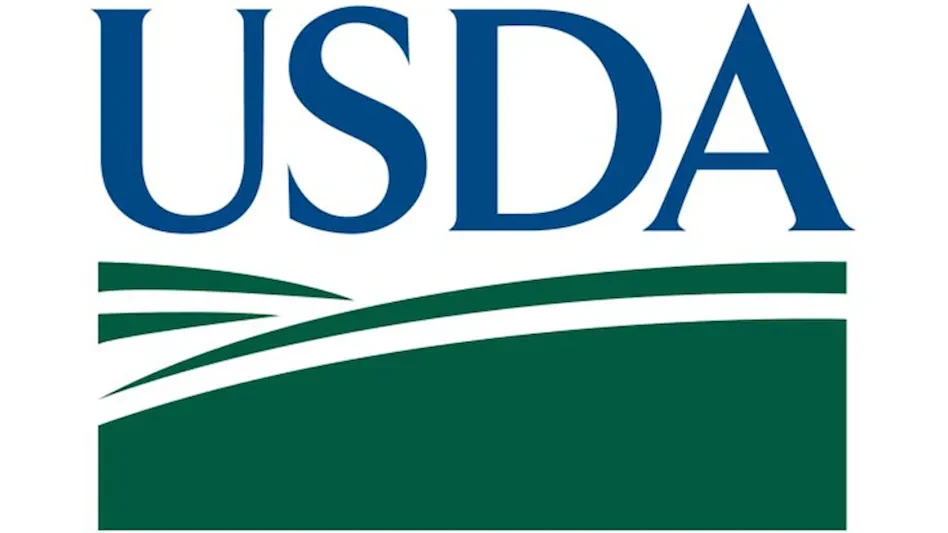 There has been increasing interest in, and use of, mating disruption (MD) as a management tactic for Indianmeal moths in food processing, distribution, and retail facilities. As with any new technology, there are a lot of questions about it, some of which are briefly addressed here.
There has been increasing interest in, and use of, mating disruption (MD) as a management tactic for Indianmeal moths in food processing, distribution, and retail facilities. As with any new technology, there are a lot of questions about it, some of which are briefly addressed here.
What is mating disruption?
Mating disruption (MD) involves releasing large amounts of synthetic pheromone into a facility to reduce mating by pest insects. Pheromones are chemicals released by one insect to communicate with another individual of the same species. Pheromones have been used for many years to attract insects into traps, with sex pheromones (released by females to attract males) being one of the strongest types of attractant to use in a trap. MD uses sex pheromones as well, but instead of being used for monitoring, they are used to suppress pest population growth by reducing reproduction. Commercial MD products are registered and available for use in food facilities. These products target the Indianmeal moth, but since this species shares a pheromone with some other important pest species, it can also be used against other moth pests such as the almond moth and Mediterranean flour moth.
How does MD work?
When female moths release pheromone to attract males (a process termed calling), the pheromone disperses through the air in a plume. Flying males follow these pheromone plumes to track down females, and this increases the chance of successful mating. MD involves the release of large amounts of synthetic pheromone into the environment, which confuses the males and makes it difficult for them to locate females. If males don’t find female moths in the limited time available in their short lives, they don’t mate, and females don’t lay viable eggs. Shutdown of mating does not have to be complete for MD to be effective, since even delaying the number of days until mating occurs can reduce the number of viable eggs laid.
How is the MD program implemented?
Pheromone is released from MD dispensers that are hung in a grid pattern throughout a facility. Pheromone dispensers release more pheromone than the lures that are typically used in pheromone traps. Enough pheromone dispensers need to be placed in a given space to saturate the air with pheromone. Since pheromone is released from all the surfaces of the dispensers, it is important that they not be in contact with any other surfaces as this can reduce the emission rate. Manufacturer guidelines should be followed to calculate the number of dispensers for a given volume, where they should be placed, and how frequently they need to be changed. Dispensers release pheromone over periods of up to six months, depending on the product; so while initial setup can be labor intensive, program maintenance is minimal.
How is a program’s impact evaluated?
MD does not immediately eliminate moths from a facility since it does not directly kill individuals. The result to expect from the MD program is a suppression of moth numbers to a low and more stable level. Complete shutdown is unlikely given the potential for immigration of mated moths and because mating may still occur at a reduced rate within a facility. Other management tactics such as sanitation, exclusion, and insecticide treatments should enhance the impact of MD and reduce activity of other pest species not being targeted with MD.
The impact of the MD program can be evaluated using pheromone traps, but it needs to be kept in mind that, in the same way that the male’s response to calling females is interfered with by MD, so is the response of males to pheromone lures in traps. There should be an immediate reduction in capture of males in pheromone traps after implementing the MD program. This initial reduction is because of the interference with response to traps and that males may still be present. Over time, decreased numbers of moths present in a facility also can contribute to the reduced captures in traps, but it can be difficult to separate the two causes. To supplement pheromone trapping data, moth activity can be evaluated using other methods, such as inspection for moth activity, customer complaints, and oviposition traps to measure egg laying by females.
When initiating a program, it is important to also put into place a method to evaluate the impact of the program. This can be done by comparing moth activity to historical trends (for example, captures in pheromone traps before and during MD), and/or trends in other facilities, buildings, or rooms not receiving MD during the same period. Caution needs to be taken in interpreting these comparisons since moth numbers can differ for reasons other than the MD program.
How successful have programs been?
Scientific evaluations of MD programs have been increasing, as have anecdotal reports from a growing number of adopters in the food industry. General trends have been that a large percent of reduction in male captures in traps is associated with starting of the MD program, and pest activity can be suppressed for a season. In situations where other measures of moth activity, such as oviposition traps, were also used, tracking has tended to align with that of the pheromone traps. This is an encouraging result since it suggests that pheromone trapping can still be a good measure of MD program success. As with any new tool, there can be a learning curve to developing effective programs, but the evidence accumulated to date suggests that MD is a promising new tool.
Photo: Clemson University - USDA Cooperative Extension Slide Series, Bugwood.org

Explore the December 2012 Issue
Check out more from this issue and find your next story to read.
Latest from Quality Assurance & Food Safety
- Bird Flu: What FSQA Professionals Need to Know
- Registration Open for 129th AFDO Annual Educational Conference
- Frank Yiannas, Aquatiq Partner to Expand Global Reach of Food Safety Culture
- World Food Safety Day 2025 Theme: Science in Action
- Ancera Launches Poultry Analytics System
- USDA Terminates Two Longstanding Food Safety Advisory Committees
- Catalyst Food Leaders Announces Virtual Leadership Summit for People in Food
- Food Safety Latam Summit 2025 Set for Mexico City





